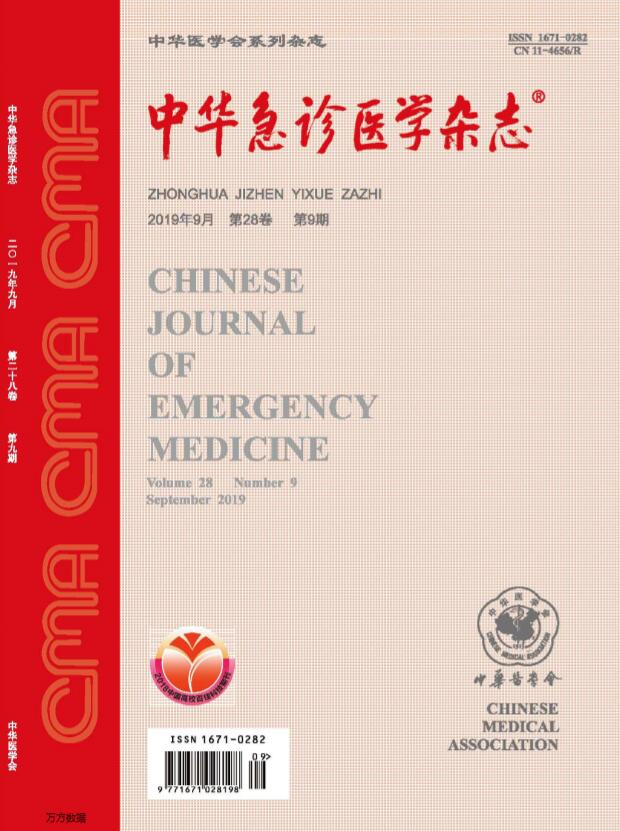N-乙酰半胱氨酸在百草枯诱导的上皮-间质转化中保护A549细胞
Q4 Nursing
引用次数: 0
摘要
目的探讨百草枯(PQ)诱导的A549细胞上皮-间充质转化(EMT)的调控机制及N-乙酰半胱氨酸(NAC)对其的保护作用。方法采用30μmol/L PQ暴露于A549细胞4 d建立EMT模型。10 mmol/L NAC预孵育2 h。光镜下观察A549细胞的形态学变化。蛋白质印迹法检测TGF-β1、E-钙粘蛋白和α-平滑肌肌动蛋白的表达水平。结果在PQ诱导的EMT模型中,与对照组相比,PQ组表现出典型的形态学变化,细胞从鹅卵石样上皮外观变为纺锤形间充质样外观。Western blotting显示,PQ组TGF-β1和α-平滑肌肌动蛋白蛋白水平显著升高,E-钙粘蛋白蛋白水平显著降低(均P<0.05),形态学改变显示更多的鹅卵石样上皮外观。结论细胞实验表明,PQ暴露可引起上皮细胞EMT,NAC在这一过程中具有保护作用。从而为临床治疗PQ中毒引起的肺纤维化提供新的思路和策略。关键词:百草枯;N-乙酰半胱氨酸;转化生长因子-β1;上皮-间充质转化本文章由计算机程序翻译,如有差异,请以英文原文为准。
N-Acetyl-cysteine protects A549 cells in paraquat-induced epithelial-mesenchymal transition
Objective
To investigate the regulatory mechanism of Paraquat (PQ)-induced epithelial-mesenchymal transition (EMT) and the protective mechanism of N-acetyl-cysteine (NAC) in PQ-induced A549 cells by EMT markers (E-cadherin and α-smooth muscle actin).
Methods
EMT model was established by 30 μmol/L PQ-exposed A549 cells for 4 d. The application of 10 mmol/L NAC was incubated with A549 cells for 2 h in advance. Morphological changes of A549 cells were observed under light microscope. Western blot was used to detect the expression levels of TGF-β1, E-cadherin and α-smooth muscle actin.
Results
In PQ-induced EMT model, the PQ group showed typical morphological changes, and the cells changed from cobblestone-like epithelial appearance to spindle-shaped mesenchymal-like appearance compared to the control group. Western blotting showed that the protein levels of TGF-β1 and α-smooth muscle actin in the PQ group were significantly increased and the protein levels of E-cadherin were decreased in the PQ group (all P<0.05). NAC preincubation can effectively reverse the above changes caused by PQ exposure: the protein levels of E-cadherin and α-smooth muscle actin were significantly increased and decreased, respectively and morphological changes showed more cobblestone-like epithelial appearance.
Conclusion
Cell experiments showed that PQ exposure can cause EMT in epithelial cells, and NAC has a protective effect in this process. Thus, it may provide new ideas and strategies for the treatment of pulmonary fibrosis caused by PQ poisoning in clinical practice.
Key words:
Paraquat; N-Acetyl-cysteine; Transforming growth factor-β1; Epithelial-mesenchymal transition
求助全文
通过发布文献求助,成功后即可免费获取论文全文。
去求助
来源期刊

中华急诊医学杂志
Nursing-Emergency Nursing
CiteScore
0.10
自引率
0.00%
发文量
8629
期刊介绍:
Chinese Journal of Emergency Medicine is the only national journal which represents the development of emergency medicine in China. The journal is supervised by China Association of Science and Technology, sponsored by Chinese Medical Association, and co-sponsored by Zhejiang University. The journal publishes original research articles dealing with all aspects of clinical practice and research in emergency medicine. The columns include Pre-Hospital Rescue, Emergency Care, Trauma, Resuscitation, Poisoning, Disaster Medicine, Continuing Education, etc. It has a wide coverage in China, and builds up communication with Hong Kong, Macao, Taiwan and international emergency medicine circles.
 求助内容:
求助内容: 应助结果提醒方式:
应助结果提醒方式:


